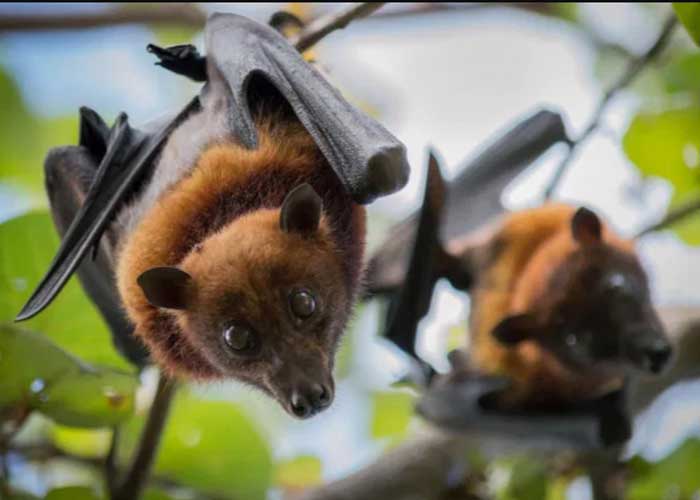London, Sep 24, 2021- Scientists have found three viruses in bats in Laos that are more similar to SARS-CoV-2 than any other known virus, media reports said.
The study, posted on the preprint server Research Square and not peer-reviewed yet, showed that the similarity of parts of the new viruses’ genetic code with SARS-CoV-2 reinforces claims that Covid-19 has a natural origin. At the same time, their discovery means there are numerous coronaviruses with the potential to infect people, Nature reported.
The finding is both “fascinating, and quite terrifying”, David Robertson, a virologist at the University of Glasgow, the UK, was quoted as saying.
According to researchers at the Pasteur Institute in Paris, and the National University in Laos, the new-found viruses contain receptor binding domains that are almost identical to that of SARS-CoV-2, and can therefore infect human cells, Nature reported.
To find the virus, the team took saliva, faeces and urine samples from 645 bats in caves in northern Laos. They found viruses in three horseshoe (Rhinolophus) bat species, which were each more than 95 per cent identical to SARS-CoV-2. The new viruses have been named BANAL-52, BANAL-103 and BANAL-236, the report said.
Further, the scientist with the discovery of bats living in caves in Laos carrying a similar pathogen to Covid suggests a natural spillover rather than a lab-leak.
“When SARS-CoV-2 was first sequenced, the receptor binding domain didn’t really look like anything we’d seen before,” Edward Holmes, a virologist at the University of Sydney in Australia, was quoted as saying.
This caused some people to speculate that the virus had been created in a laboratory. But the Laos coronaviruses confirm these parts of SARS-CoV-2 exist in nature, he said.
“I am more convinced than ever that SARS-CoV-2 has a natural origin,” said Linfa Wang, a virologist at the Duke-NUS Medical School in Singapore.
Relatives of SARS-CoV-2 have previously also been discovered in Thailand, Cambodia and Yunnan in southern China, the report said.
Together, the study demonstrates that southeast Asia is a “hotspot of diversity for SARS-CoV-2 related viruses”, Alice Latinne, an evolutionary biologist at the Wildlife Conservation Society Vietnam in Hanoi, was quoted as saying by Nature.
Researchers at the Pasteur Institute had last year described another close relative of SARS-CoV-2, called RaTG13, which was found in bats in Yunnan. It was 96.1 per cent identical to SARS-CoV-2 overall and the two viruses probably shared a common ancestor 40-70 years ago — similar to the new-found viruses.
However, there are still missing links to the origins of the pandemic, the researchers said. For example, the Laos viruses don’t contain the so-called furin cleavage site on the spike protein that further aids the entry of SARS-CoV-2 and other coronaviruses into human cells.
The study also doesn’t clarify how a progenitor of the virus could have travelled to Wuhan, in central China, where the first known cases of Covid-19 were identified — or whether the virus hitched a ride on an intermediate animal. Answers might come from sampling more bats and other wildlife in southeast Asia, which many groups are doing, the report said. (Agency)
Subscribe to YesPunjab Telegram Channel & receive important news updates





































































